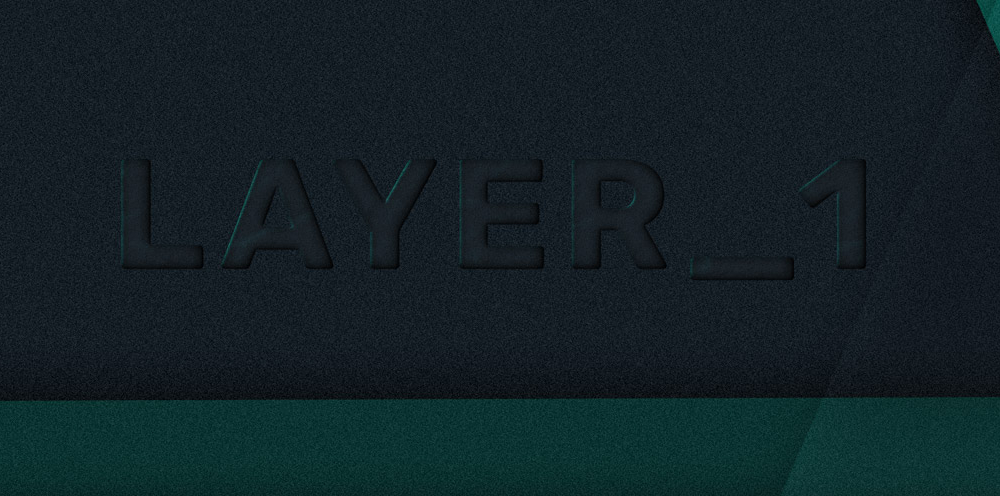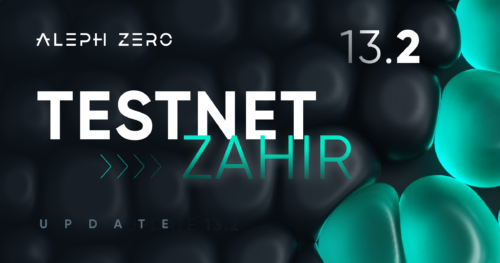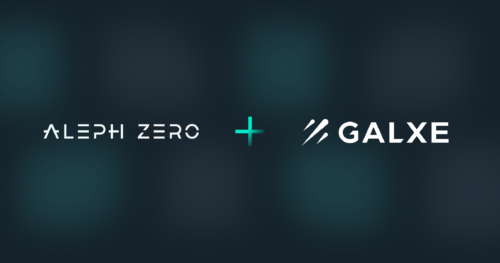Aleph Zero: Why Do We Need Another Layer 1?
Oct 10, 2019

We have created a new consensus protocol. It is powering what’s known as a blockchain Layer 1, or an infrastructure layer. And every time we talk with someone about Aleph Zero, one question is inevitable: why bother building a new platform?
Why, on earth, would you reinvent the wheel?
These are important questions, and we will answer all of them in the hopes of satisfying the inquisitive minds of those curious about Aleph Zero.
What Is a Protocol Layer in Computer Networking?
At the surface level, blockchains are just peer-to-peer networks for exchanging transactions, similarly to WiFi or LTE, which are different ways for connected devices to exchange messages. The way in which each type of communication is performed is described by its respective protocol.
Networks are massively complicated by design, so the designers organize the protocols, software, and hardware in layers. Each protocol belongs to one layer and each is distributed among the network nodes.
A layer operates by exchanging messages on its level. So, layer n operates with layer n messages; layer n-1 operates with layer n-1 messages and so forth.
Let’s add a service model to the layer. In this concept, layer n-1 offers services to layer n. In Computer Networking: A Top-Down Approach Featuring the Internet, James F. Kurose and Keith W. Ross compare this concept to the way we (used to) send letters.
The sender and receiver are in the same layer. The sender writes a letter, puts it in an envelope and throws it into the mailbox. Here, the post takes over the transportation process – to deliver the letter to the correct address in a timely manner.
The postal service is another layer. It may add some information to the envelope, such as a barcode, has some processes that ensure the mail will be transported even if the car breaks down, etc.
Once the post is delivered, it moves back to the layer of senders and receivers. And this is – on many layers – how the Internet works.
Using layers is not a choice – it is rather a necessity because of the way the Internet works. Think about the types of connections – Wi-Fi, Ethernet, LTE. They are completely incompatible with each other but with one layer above that can join them, they all can provide Internet connection and allow devices to communicate, no matter which connection type is used.
But what do Internet layers have to do with blockchain? Ultimately, understanding this information about Internet layers can help one understand the structure of a blockchain.

What Is a Blockchain Layer?
Like the Internet, blockchain can also be considered as having a layer structure, and the layers also interact with similar principles, although that’s about the only thing blockchain and the Internet have in common.
The concept of layers is abstract, so it is applied with some room for interpretation. And so in the case of blockchain, as this space is still quite new, this room is much bigger than in the Internet’s case. You can see the wide range of theories and interpretations clearly in publications written a few years ago.
For example, a Medium article by David Xiao in 2016 suggests we should be talking about five layers of blockchain, that is:
- Consensus
- Mining
- Propagation
- Semantic
- Application
Contrary to Xiao’s article, Kyle Torpey wrote an article about Eric Lombrozo pointing to two main layers, consensus and P2P propagation, as well as referring to off-chain protocols as another layer, but by the time of writing (2016), they were just barely in development. They still are, actually, but with some advancements.
For the purpose of this article, we will speak in terms of the most popular, broad concept of layers in blockchain:
- Layer 1 – the actual blockchain, sometimes called the “main chain”.
- Layer 2 – the application layer that uses blockchain underneath without the need for interfacing. This is the layer that can be used to solve problems for specific use cases.
Why Blockchain Layer 1?
There’s a reason I’ve brought up the case of the Internet. Look at wireless Internet access on mobile devices. A 2G infrastructure allowed to download only around 10-100 kbit/s (depending on the standard). 3G made a huge leap when it comes to speed – it was 1,440 times faster. 4G brought that numbers further up, being 70 times faster. Right now, there’s a 5G network being introduced that allows downloading at speeds even as high as 3,000 Mbit/s. That’s 3 times faster than the 4G standard (LTE-Advanced) and over 300,000 times faster than 2G!
Basically this is just an evolution of technology and standards that make browsing the Internet faster. But with introducing 3G, then 4G, and now the 5G, the Internet as the top layer of applications has changed even more. Websites, applications, and connected devices can be built differently, using more data to provide functionality that previously would be technically infeasible.
For example, there are many predictions on how introducing 5G would change our lives. It could introduce new types of entertainment, such as virtual reality films, it could allow cars to communicate with each other and with other services, and possibly be used for many more IoT-like applications.
The top layer can only be as good as the layers underneath. If the Internet can be much faster due to layer 1 advancements, we can transfer much more data, and therefore provide completely different applications.
The same is with blockchain. The top layer, such as Smart Contracts and other applications can only be as good as the layer they are built on. Right now, layer 1 blockchains are the biggest limitation.
There isn’t however much improvement in that space as what has been called a Blockhain Trillema hasn’t been solved yet. The Trilemma is a concept introduced by Vitalik Buterin, the founder of Ethereum. It says that you can’t achieve layer 1 Scalability, Security, and Decentralization all at once. You can only develop two aspects by sacrificing the third one. For example, you can create a well-decentralized solution that is highly secure but at the cost of scalability.
We trust that we have the foundation that may contribute to solving this challenge. Our consensus protocol scales up extremely well, reaches the maximum theoretical security guarantee (aBFT), and still, it is powering a network that is decentralized to a real-world usable extent. This technology can keep the transaction speeds at dozens of thousands of transactions per second on a high scale. All of those statements have already been test-proven in a laboratory environment, but still need to be verified as the network grows in adoption and real-world usage.
It’s just as with mobile Internet development, like switching from 2G to 3G. DLT projects that will replace their current layer 1 with Aleph Zero will be able to provide completely new, better solutions and services and introduce features that have been beyond current blockchains’ limits.
By improving layer 1 – the thing that is running underneath, we can improve the whole space that will be using it. This is what our implementation of DAG protocol – Aleph Zero – is meant to achieve.
Our mission is to provide a solution that will be used in as many applications as possible and will withstand the test of time. We also want to encourage and drive the global adoption of blockchain – and we believe we can do it with our protocol design, as the most reliable and flexible solution on the market.

